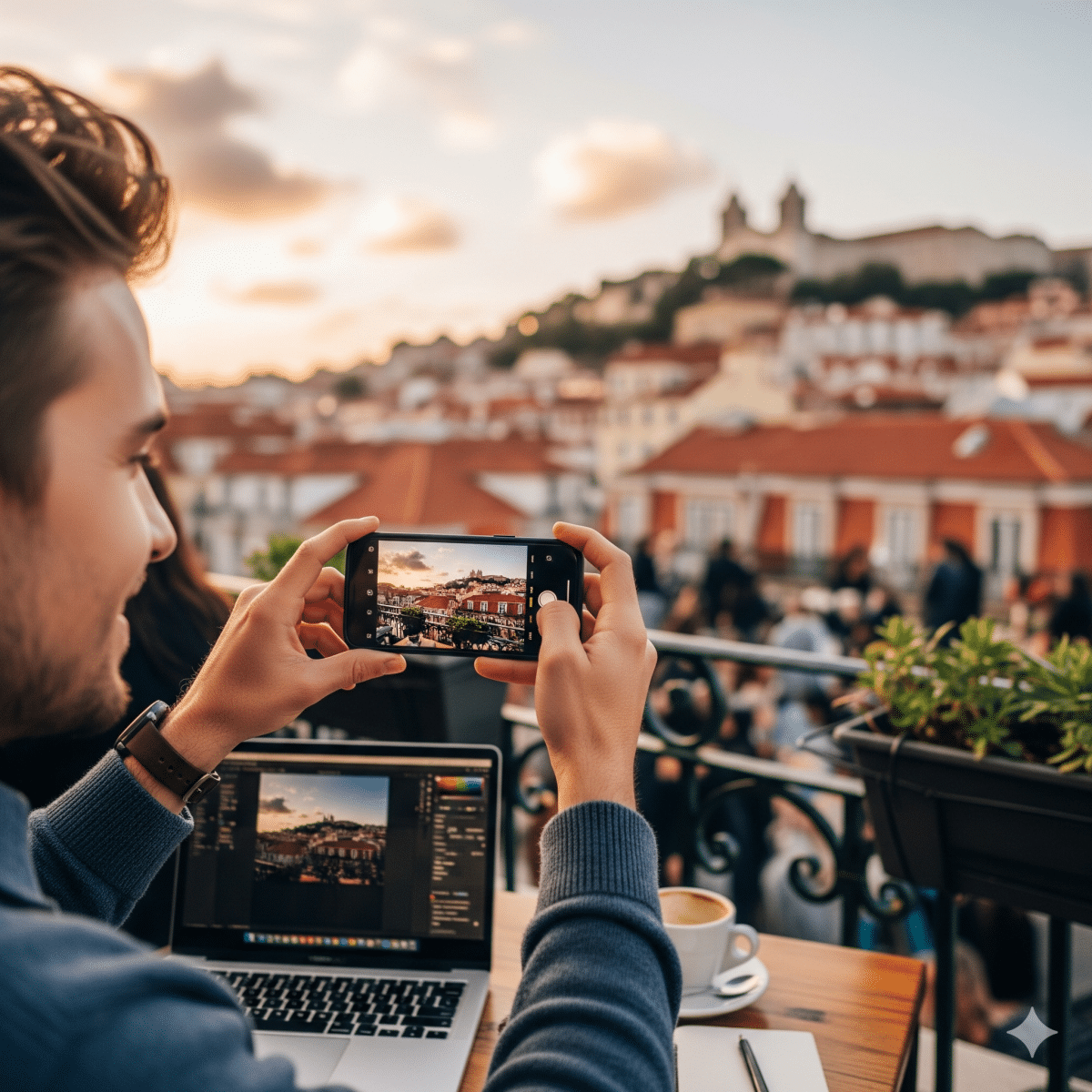LISBON, PORTUGAL – For years, the digital nomad’s toolkit has been a carefully curated collection of compromises. A laptop powerful enough for video editing but light enough to carry through crowded airports. A mirrorless camera that captures stunning images but adds another bulky item to the backpack. And a smartphone, the ever-present digital Swiss Army knife, that has steadily been absorbing the roles of its more specialized counterparts. This year, with the recent unveiling of the latest generation of smartphones, a palpable question hangs in the co-working spaces and sun-drenched cafes frequented by the world’s mobile workforce: Is it finally time to leave the dedicated camera at home?
The buzz among content creators, from travel vloggers to professional photographers, has reached a fever pitch. The relentless march of mobile technology, particularly in camera systems and artificial intelligence, is forcing a re-evaluation of what is essential for a life and career on the move. While the annual upgrade cycle can often feel like a solution in search of a problem, the advancements announced in late 2024 and early 2025 are sparking a different kind of conversation—one less about specs for specs’ sake and more about tangible improvements to a nomadic lifestyle.
For many, the debate has long centered on the trade-off between the convenience of a smartphone and the quality of a dedicated camera. “I’ve been team ‘phone-only’ for short trips for a while now,” says Sarah Jenkins, a travel vlogger currently based in Lisbon. “But for a big project, I’d still lug my Sony around. The new iPhone 17 Pro, though… that’s making me seriously reconsider.”
Her sentiment is echoed across online forums and social media. The iPhone 17 Pro’s revamped camera system, with its larger sensors and advanced computational photography, is a significant leap forward. The initial hands-on reviews praise its low-light performance and the nuanced detail in its images, two areas where smartphones have traditionally lagged behind their mirrorless rivals. For photographers who make a living capturing the vibrant chaos of a Moroccan souk or the serene landscapes of the Scottish Highlands, these improvements are not just incremental; they represent a potential paradigm shift in their workflow.
But it’s not just about still images. The line between smartphones and action cameras, once clearly defined by durability and stabilization, is becoming increasingly blurred. While a dedicated action camera like the DJI Osmo Pocket 3 still holds an edge in ruggedness and mounting options for extreme sports, the latest smartphones are catching up in video quality and stabilization. For the majority of travel vloggers, whose “action shots” are more likely to be a brisk walk through a bustling city than a downhill mountain bike race, the improved video capabilities of the new flagship phones may be more than enough.
The other side of this technological coin is the integration of artificial intelligence, a feature that is becoming as central to the smartphone experience as the camera itself. Samsung’s Galaxy S25 Ultra, with its suite of AI-powered features, is a prime example. For the digital nomad, these are not just novelties; they are practical tools that can streamline a mobile workflow. Imagine AI that can automatically transcribe and summarize a client call, allowing a freelancer to be fully present in the conversation without worrying about taking notes. Or consider the ability to use natural language to search through a vast photo library for a specific image from a past trip, saving precious time on content creation.
These AI enhancements are a direct response to the needs of a generation of workers who are not tied to a traditional office. The ability to perform complex tasks on a single, pocket-sized device is the holy grail of mobile productivity. As one commenter on a popular digital nomad subreddit put it, “My phone is my office, my creative studio, and my connection to the world. The smarter it gets, the lighter my backpack becomes.”
However, this enthusiasm is not universal. A growing sentiment within the digital nomad community champions a more minimalist approach. For some, the constant connectivity and the addictive nature of smartphones are a detriment to the very freedom they seek. This has led to a surprising interest in “dumbphones” – basic devices that offer little more than calls and texts. While this may seem counterintuitive for a demographic that relies so heavily on technology, it speaks to a desire for a healthier work-life balance and a more intentional use of digital tools.
The debate also extends to the necessity of a top-of-the-line flagship phone. As mid-range smartphones become increasingly capable, many digital nomads are questioning the value proposition of a thousand-dollar-plus device. “Do I really need the absolute best camera, or is ‘good enough’ perfectly fine for my needs?” asks Mark Chen, a freelance writer and photographer. “Often, the difference in quality is only noticeable to a trained eye, and my clients are more interested in the story I’m telling than the pixel count of my photos.”
This pragmatic perspective highlights a key consideration for anyone living a location-independent lifestyle: value. Every piece of gear must justify its cost and its weight in the backpack. For some, the all-in-one convenience and cutting-edge features of the latest flagship phones will be a worthwhile investment. For others, a more modest setup will suffice, freeing up resources for what matters most: the experiences of travel and the freedom to work from anywhere.
Ultimately, the latest announcements in smartphone technology offer digital nomads and content creators more choices than ever before. The gap between “good enough” and “professional quality” is rapidly shrinking, and the integration of AI is transforming these devices into truly intelligent assistants. Whether the future of nomadic creativity lies in a single, all-powerful device or a more deliberate and minimalist toolkit remains to be seen. But one thing is certain: the conversation is no longer about what these phones can do, but what they can empower their users to become – unburdened, efficient, and free to create on their own terms.
Practical tips for the Modern Nomad:
- Assess Your True Needs: Before upgrading, take stock of your current workflow. Are you consistently hitting the limits of your current phone’s camera? Are there specific AI features that would genuinely save you time and effort?
- Consider the “Good Enough” Revolution: Don’t overlook mid-range smartphones. Research reviews from creators with similar needs to see if a less expensive model can meet your requirements.
- Explore the World of Mobile Accessories: A few key accessories, like a quality mobile tripod, an external microphone, or a set of clip-on lenses, can significantly elevate the quality of your smartphone content without the bulk of a full camera setup.
- Embrace AI-Powered Productivity: If you do invest in a new AI-equipped phone, take the time to learn its features. Experiment with AI-powered editing apps, transcription services, and organizational tools to streamline your mobile office.
- Find Your Digital Balance: If you find yourself overwhelmed by constant connectivity, consider a “digital detox” or even experimenting with a basic secondary phone for non-work hours to maintain a healthy separation between your professional and personal life on the road.
For those interested in a deeper dive into the technical specifications and reviews of the latest smartphones, reputable sources such as TechRadar, The Verge, and the YouTube channels of tech reviewers like Marques Brownlee (MKBHD) and iJustine offer comprehensive and unbiased analysis. Digital nomad-centric blogs and forums also provide real-world insights from a community that is constantly testing the limits of mobile technology.




